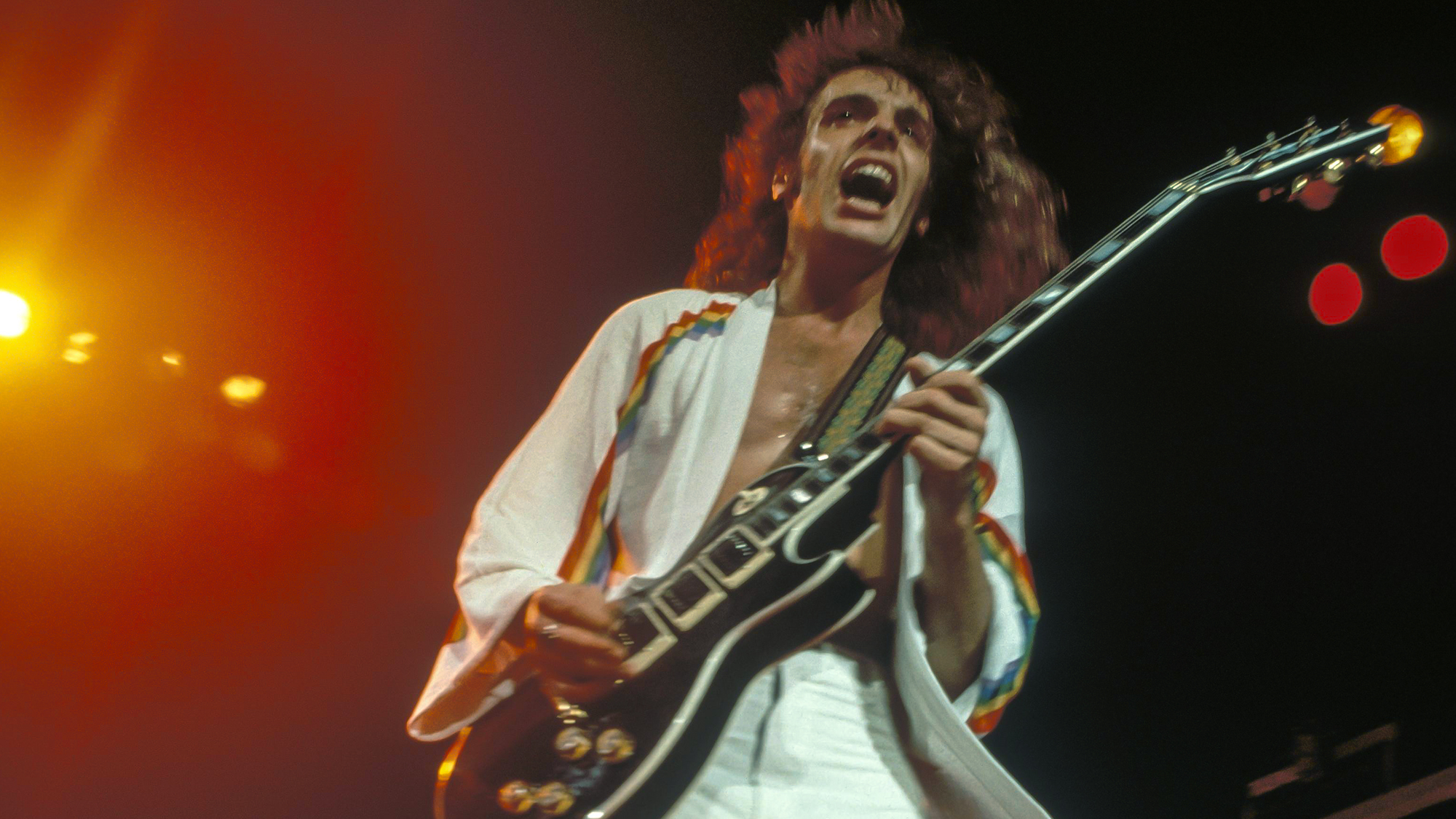“Music Is a Vast Ocean if You Dive Into Yourself Deeper”: Debashish Bhattacharya Connects East to West in a Fusion That’s Earned Him Raves From John McLaughlin and Americana Dobro Icon Jerry Douglas
Playing otherworldly licks on instruments of his own invention, the slide master says, “My guitars send the soundscapes with the scent of spirituality”
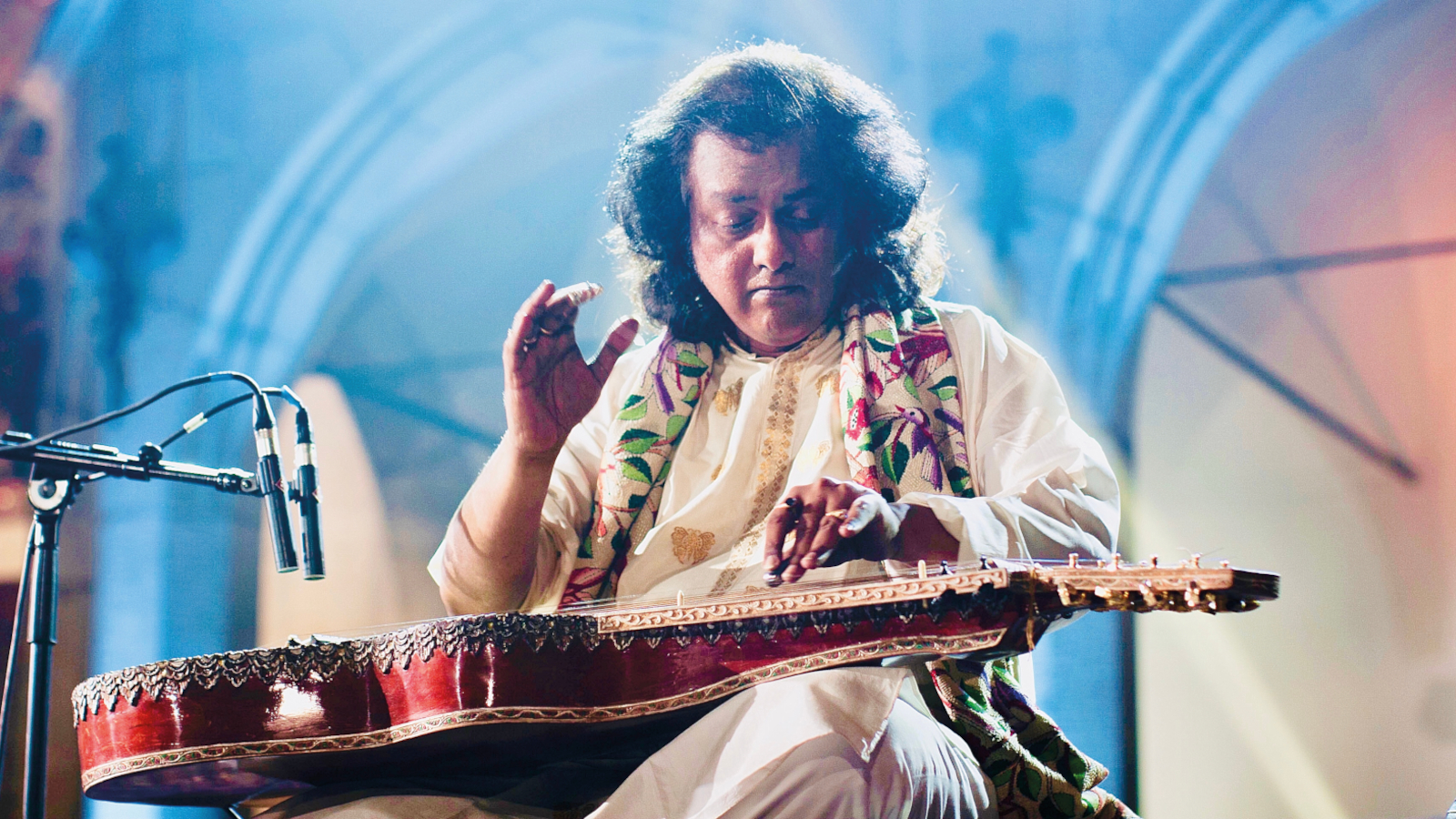
Debashish Bhattacharya is truly a player’s player. It’s not unusual for guitarists to heap praise on their pals, but when luminaries gush like an atmospheric river, one must pay attention to what they say, and Bhattacharya inspires an impressive array of artists. His 2013 album, Beyond the Ragasphere, featured world jazz maestro John McLaughlin and Americana Dobro icon Jerry Douglas, and both are passionate in their praise.
“Debashish is the master of the slide guitar,” McLaughlin proclaims. “From his soulful playing in the introductions to his compositions, to the brilliance of his up-tempo playing, he has no equal. A must for all guitarists!”
Douglas adds that Bhattacharya is “at the forefront of a new body of Indian slide players. His sense of melody is uncanny, and he has all the tools and history to back it up. Debashish has no peer in the depth of his technique and it is very obvious that he has put in the time listening to the masters that came before him. Now he is putting it all to good use on this new recording.”
The Sound of the Soul (Abstract Logix) features four transcendent, all-acoustic tracks, and players of all styles can learn a lifetime’s worth of lessons by immersing themselves. Playing in a lap-steel style on singular instruments he created for himself, Bhattacharya offers an enticing escape from Western worries and the trappings of familiar guitar tropes.
Derek Trucks is perhaps the most iconic example of how studying Eastern players can help players transform a style. By examining the music of masters, including one of Bhattacharya’s mentors, sarod guru Ali Akbar Khan, Trucks took down-and-dirty bottleneck blues to mystical heights.
Likewise, Steve Kimock and Ben Harper adopted numerous Eastern techniques into their lap-steel styles, as evidenced on their Last Danger of Frost and Winter Is for Lovers albums, respectively. Kimock sums up his feeling about Bhattacharya with awe and humor: “If the aliens came and said, ‘Bring us your champion,’ you’d bring Debashish. He’d play and they’d go, ‘Oh, okay. We’ll let you guys live.’”
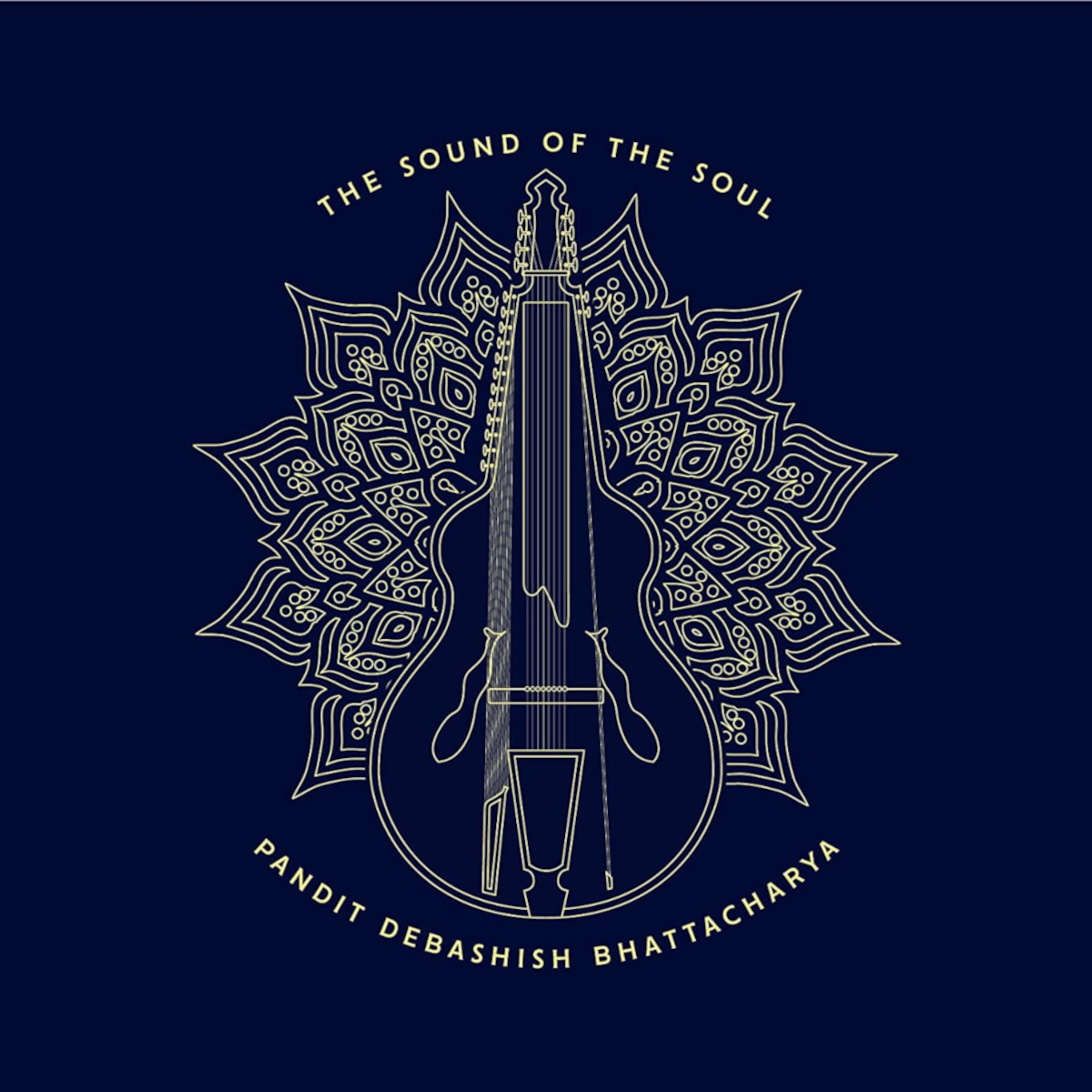
Can you explain the root connection between Eastern and Western guitar through the story of influential Hawaiian steel guitar pioneer Tau Moe?
All the latest guitar news, interviews, lessons, reviews, deals and more, direct to your inbox!
Tau Moe was a prime entertainer for the British and American army allies during World War II. Tau and his wife, Rose, stayed and lived in Kolkata [Calcutta] doing wonderful concerts. Hawaiian music and culture became so popular that generations started playing electric pedal-steel guitar as well as ukulele and fingerpicking on the 12-string guitar.
But a few traditional Indian music families took the lap Hawaiian guitar and started playing contemporary music on it. And out of all of them, my guru, [father of Indian classical guitar] Brij Bhushan Kabra, and a couple more people took in lap to play Eastern raga music. Almost around that same time, as a three year-old boy, I took up lap guitar. I’m now 60, and I’ve spent my whole life extending the slide guitar, brought from Western mode to Indian mode.
How did you start playing at such a young age?
Music is in my veins. My ancestors were generations of stage performers. My father was a classical vocalist who started working as an accountant after marrying my mother, and a year later someone gave him a Hawaiian guitar. My mother was also a great vocalist, and she put it in my hands when I was three. She showed me the major scale and how to hold the bar. The rest was fun. I started playing all the songs I heard everywhere. Gradually, it became my life partner.
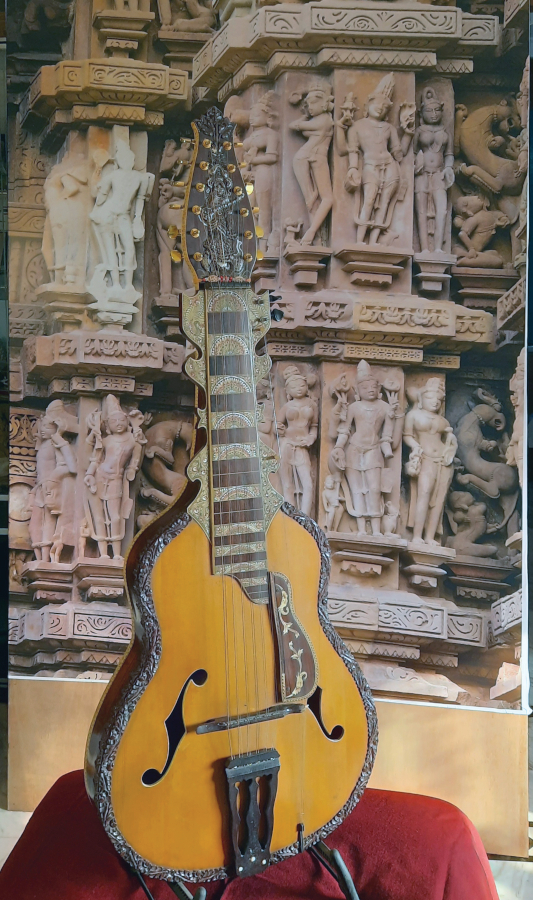
The next year at the age of four I played on the National Radio program [All India Radio]. At age seven, I was denied a national scholarship, even though I stood first in the Indian national scholarship competition. My only disqualification was I played raga music on a Hawaiian guitar, not on a sitar or a veena. That made my relationship with Hawaiian guitar go further, stronger and forever. It made me desperate to what I do today and what I will do tomorrow – living on slide guitar.
Slide has been a big part of Western playing ever since the Delta blues. Can you draw a correlation?
Delta blues is based on human emotion, but for the same emotion, expression in Indian music has different ways of bending or accentuating notes. I’ve found many connections that would take a long time to explain, but in a few lines, blues scales are related to Indian mountain folk melodies. All along the Himalayan range from West to East, mountain songs from Tibet to Eastern Asia have the same pentatonic blues scale.
Can you explain Ali Akbar Khan’s influence on your own playing?
In Kolkata, at the age of two on a winter night, I was seated in my parents’ lap behind 5,000 people on the floor for an all-night concert. My father later told me that I was super excited to see and hear him playing, even at such a tender age. I followed his music and technique on slide guitar all my life. His melodic emotive expressions have stirred me so much since childhood until now. The appeal of such soul made me into what I’m doing today. Study was not easy with him. Since my guru, Brij Bhushan Kabra, was his student, I was recommended by my guru to him. After his father Acharya Allauddin Khan’s life, he was and is my primary inspiration.
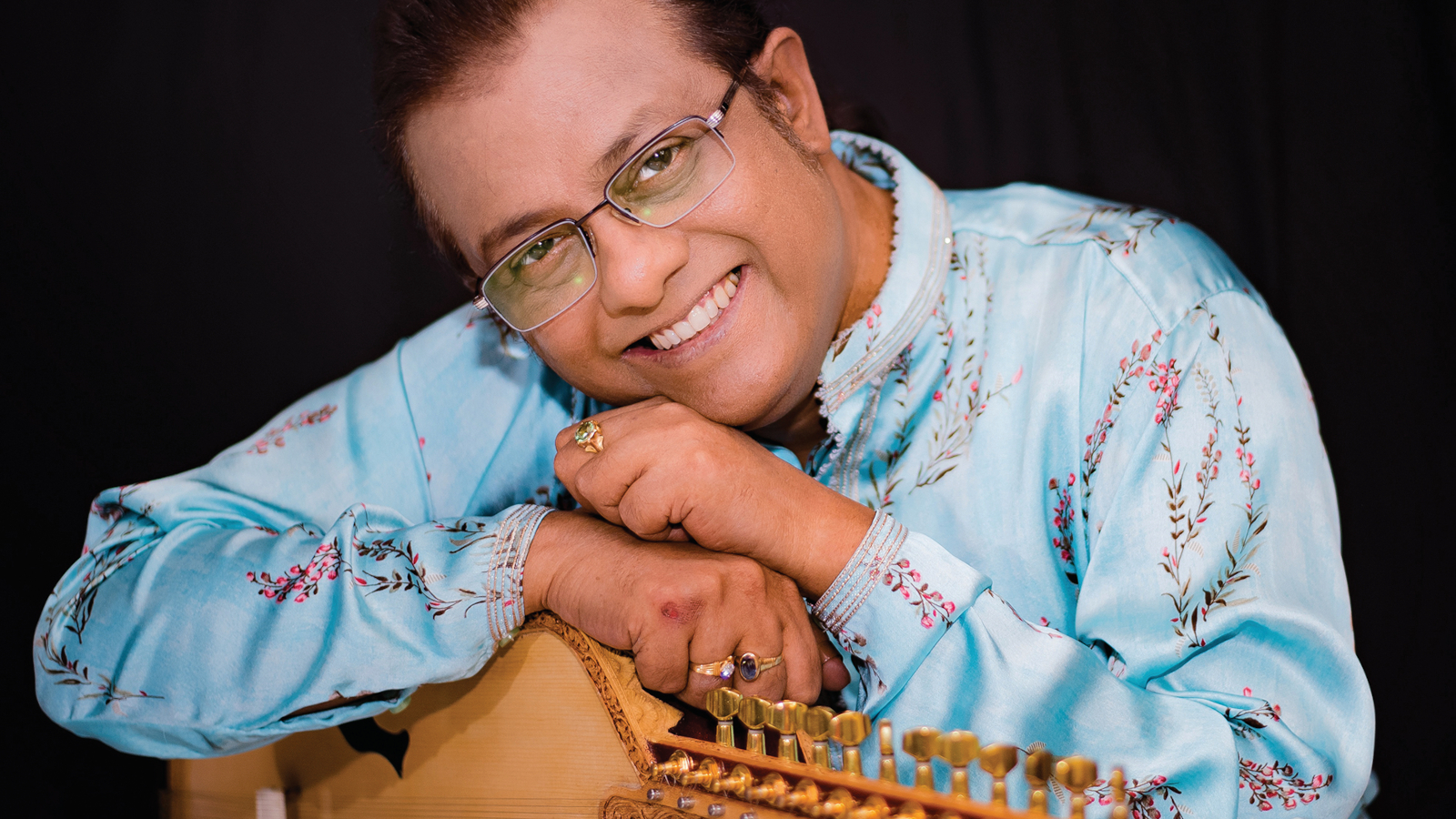
What’s the intention behind building your own instruments, incorporating elements from Hawaiian lap steel and Americana-style Dobro to the sarod and perhaps other influences?
My instruments are extensions of myself. They were created to make a musical connection between East and West, and eventually a way to connect the world from the Eastern sound of a guitar-like instrument. They are guitar plus!
But they are individually unique. You can hear a blend between all those genres and instruments you named in my four instruments. The chaturangui is a 22-/24-string combination sitar/sarod/violin/rudra veena. The gandharvi is a 12-/14-string guitar/veena/santoor/sarangi. The anandi is a four-string slide ukulele. And I’m proud of my latest creation, the pushpa veena, which is the result of such humble lifelong work to utmost extension. But I only played chaturangui on the whole new album.
What is the tuning and time signature on the first track from The Sound of the Soul, “Ever the Flame Burns”?
It’s D minor tuning: [from low to high] D A D F A D. The time is 10 beats per cycle at a fast tempo. The name of the rhythm is Sool Taal.
Can you explain the sense of song in an Indian raga compared to the Western sense?
Western melody is simpler and in one line, where changes in chords, harmony and the chorus are the highlight. Indian raga is the ancestor of diatonic and semi-diatonic music. It’s modal. The relation and value of notes are created by the multi-note melodies and sub-melodies in a natural progression, where endless possibilities are confined into different scales.
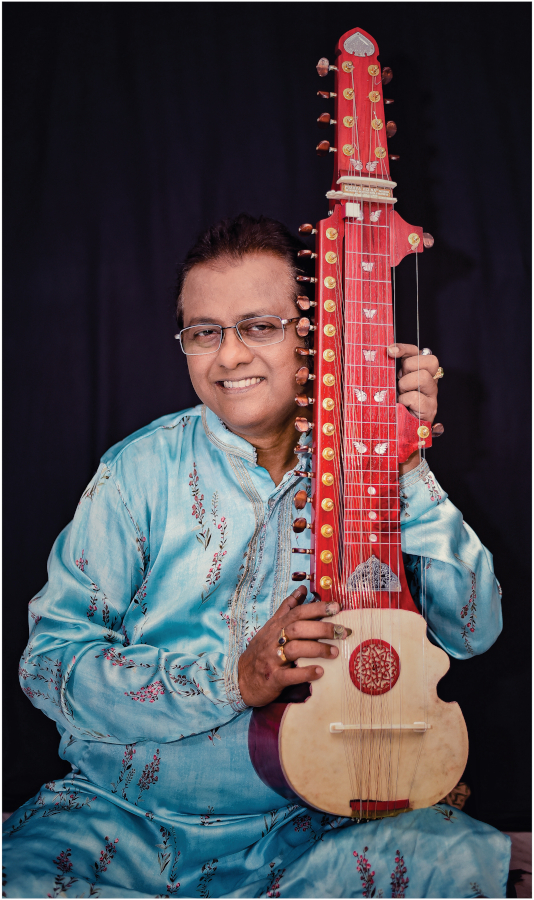
Out of each scale are many different melodic progressions, and each progression can make hundreds of songs. Compositions are either lyric-based or instrumental. There are at least two stanzas, or sometimes four. It’s completely different, yet universal music.
One of the wildest aspects for a Western listener is the drone of one tonality, rather than chord changes. It seems that you don’t actually play chords yourself, only single notes. Is that accurate?
Yes. Another most important observation is that the two classical musics are extremely polarized, since Western classical music is very much dependent on each individual note, whereas in Indian classical music the space between two notes and the nuances around the notes make the music.
What slide do you prefer?
I play a John Pearse bullet bar named the Bhattacharya Hindustani Slide because it’s made for my music. It’s lighter and smaller, with fatter tone and more sustain. I also like the crystal bar from Ian McWee [Diamond Bottlenecks’ hand-blown lead crystal slides]. They are round and small in length.
How did you develop your distinct slide technique?
I learned slide from the Western technique of the early ’60s, but I have developed unique wrist techniques coupled with three-finger picking that made my approach a better close-circuit servant of slide guitar and raga music. My slide hand became extremely amiable and fluid as my fingers and wrist developed faster and bolder playing technique. After 50 years, it has more body involvement than a strictly fingers approach on the frets and strings. I’ve written a 16-chapter training course, and am looking forward for young slide guitarists joining the course and creating a new world.
It’s been said that a longer performance makes the music deeper and more powerful. It’s more like a live performance for the divine
Debashish Bhattacharya
What are your thoughts about fretted guitar?
Fretted guitar is mostly suitable for staccato notes, whereas music with fluid modal melodies is more suitable slide guitar, violin or flute. I have worked with many fretted guitarists like Bob Brozman, Martin Simpson, John McLaughlin and Hawaiian guitarists Jeff Peterson and Ledward Kaapana. The soul and story of the music is the commonality, which attracts me among all the differences.
Can you share some insights on the second track, the 40-minute “To His Lotus Feet”?
That is played with a bigger, hollow-neck chaturangui, which has a deeper, baritone sound, and the tuning is G modal [all Gs and Ds]. I use a Dorian scale, and the second and fifth notes are weaker – less played – when ascending, whereas descending has all of the notes. The rhythm has a slow, seven-beat cycle.
Our ancestors like Baba Ali Akbar Khan played ragas that are hours long. Raga is like a movie. It has scripts, stories, characters, incidents and different dialogues built in. A master portrays the raga in its details via melodic and rhythmic improvisation, and cross improvisation between melody and rhythm. It’s been said that a longer performance makes the music deeper and more powerful. It’s more like a live performance for the divine.
Veena A plucked pear-shaped instrument with 24 frets and three strings
Sarod A fretless instrument for producing continuous glissandi
Rudra veena A stick, or tube, zither with two large resonating gourds and seven or eight strings, including melody strings, chikari strings (used to emphasize the rhythm pattern), and one drone string
Santoor A hammer dulcimer
Sarangi A bowed short-necked instrument with 35 to 37 sympathetic steel or brass strings and three main gut strings
Can you address the final two tracks on The Sound of the Soul?
The title track is the same raga and same instrument as the second track, but at a faster tempo with a bit higher energy. The time is a 12-beat cycle. The final track, “Colors of Joy,” is also the same instrument and open G tuning. The melody draws inspiration from a melodic scale in a folk song of Kashmir.
What recommendations might you have to inspire players to develop more profound musical connections?
Music is a vast ocean if you dive into yourself deeper! A “guru” can help you define yourself as a music practitioner, scholar or performing artist. A playful childhood experience of universal music and practicing the games of music will help a kid to grow in the vastness fearlessly. In youth, he or she has to take only one path and one faith for at least 20 years to achieve the power to see music from a 360-degree perspective, and an overall awareness is achieved.
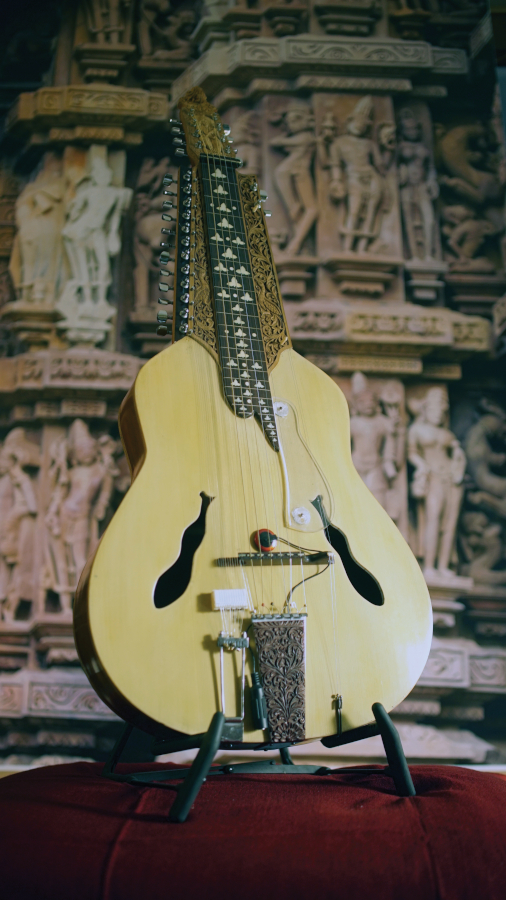
John McLaughlin’s work with Shakti is perhaps the most prominent connection point our readership has to Indian music. Can you share a thought on him?
John is the biggest East to West gateway after Pandit Ravi Shankar. His continuous divine works with giants of Indian classical music over decades has inspired generations of musicians in millions of ways. Watching his musical approach with Mahavishnu Orchestra as a young guitarist in 1984 was a stupendous milestone. Being a slide guitarist, it was impossible for me to follow his licks, but the aura and soundscape was inspirational. Seventeen years later, the Great invited me onstage. I feel blessed, and proud of the 17 years of hard work.
How about Jerry Douglas?
Jerry is known as the master of Dobro and bluegrass, but his musicality is astounding! His melodic expression touches me the most. Many heard his magical touch on my composition “JD2 Pillusion” [from Beyond the Ragasphere].
Who are some other Western guitar players that you appreciate?
B.B. King, for his total music and guitar playing. Al Di Meola, for his master musicality. Paco De Lucia, for the magical moments he created in every appearance. Ry Cooder, for his songs and slide guitar.
What are your goals for The Sound of the Soul?
I’m a professional guitarist, and if you call me “musician,” I give you a smile. I definitely want to see commercial success for the album, but it’s definitely my humble service, along with everyone involved, from the musicians to the label, the sound recordist to the journalist. The goal is to service to the musical minds, hoping this can enlighten their souls.
How do you use the guitar as a tool for spiritual growth, and how might we all?
Spirituality is like other elements of life: Some are visible and some are unseen. My music is not physically visible, per se, but my guitars send the soundscapes with the scent of spirituality. One can learn and grow his own spiritual atmosphere by diving into one’s self. “Nobody teaches better spirituality than yourself” is a message for every child. Bonding with your own guitar can help you to see that path.
Visit the Debashish Bhattacharya website for more information.
Jimmy Leslie is the former editor of Gig magazine and has more than 20 years of experience writing stories and coordinating GP Presents events for Guitar Player including the past decade acting as Frets acoustic editor. He’s worked with myriad guitar greats spanning generations and styles including Carlos Santana, Jack White, Samantha Fish, Leo Kottke, Tommy Emmanuel, Kaki King and Julian Lage. Jimmy has a side hustle serving as soundtrack sensei at the cruising lifestyle publication Latitudes and Attitudes. See Leslie’s many Guitar Player- and Frets-related videos on his YouTube channel, dig his Allman Brothers tribute at allmondbrothers.com, and check out his acoustic/electric modern classic rock artistry at at spirithustler.com. Visit the hub of his many adventures at jimmyleslie.com
